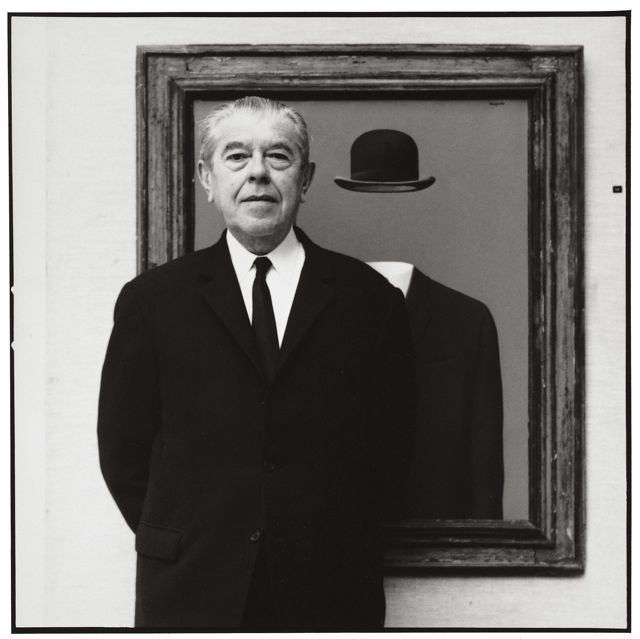
Museums and textbooks are full of names of artists who’ve left their mark on history. Certain names, however, still stand out from the rest. Whether it is through their distinctive style, their participance in a pivotal art movement, or their eccentric life, these artists have achieved astounding fame. And while these creatives are well-known in popular culture now, many of them were not recognized for their talents until decades after their death.
So, who are the most famous artists? While you can probably guess the names of a few, some of the others may be new to you. Renaissance masters Michelangelo and Leonardo, for instance, are two creative titans whose names are synonymous with art and genius. Likewise, Georgia O’Keeffe and Frida Kahlo are some of the most significant female artists of the 20th century.
Here we will take a look at the names and lives of 40 of the most famous artists in the world.
Please note that this is not an exhaustive list that in any way indicates the most talented or most worthy of recognition. Art has had an unfortunate history of excluding women and people of color, but we look forward to that changing within our generation. This list is a reflection of the names and faces that have achieved fame, thus far.
40 All-Time Most Famous Artists in the World
Italian & Northern Renaissance
Sandro Botticelli (1445–1510)
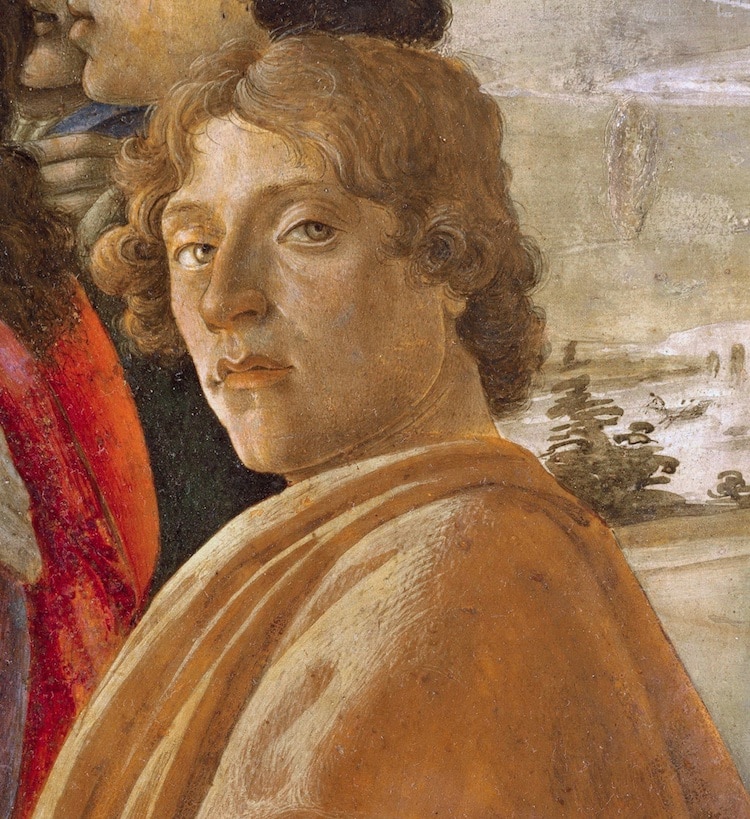
Self-portrait of Sandro Botticelli from his painting “Adoration of the Magi,” c. 1476 (Photo: Uffizi via Wikimedia Commons, Public domain)
|
Full Name
|
Alessandro di Mariano di Vanni Filipepi
|
|
Born
|
c. 1445 (Florence, Italy)
|
|
Died
|
May 17, 1510 (Florence, Italy)
|
|
Notable Artwork
|
The Birth of Venus, Primavera
|
|
Movement
|
Italian Renaissance
|
Florentine artist Sandro Botticelli was one of the most prolific painters of the 15th century. While the artist’s oeuvre features secular portraits and Biblical depictions, he is most well-known for his larger-than-life, mythological scenes. In fact, he was one of the first artists of this time period to revive Classical subject matter and adopt its iconography.
Famous works of art: Birth of Venus (c. 1486), Primavera (c. 1477–82)
Leonardo da Vinci (1452–1519)
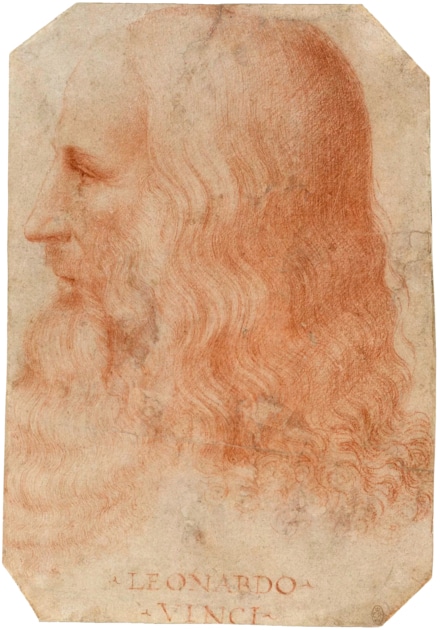
Portrait of Leonardo da Vinci, attributed to Francesco Melzi, c. 1515-17 (Photo: Royal Collection via Wikimedia Commons, Public domain)
|
Full Name
|
Leonardo di ser Piero da Vinci
|
|
Born
|
April 15, 1452 (Vinci, Italy)
|
|
Died
|
May 2, 1519 (Amboise, France)
|
|
Notable Artwork
|
Mona Lisa, Vitruvian Man
|
|
Movement
|
Italian Renaissance
|
Leonardo da Vinci was the quintessential Renaissance man. Not only did he leave behind a collection of notebooks filled with scientific observations and illustrations, but he also left an important legacy of artwork spanning different mediums. His mastery of oil painting techniques such as sfumato and chiaroscuro can be seen in his portraits, Mona Lisa and Lady with an Ermine. The former remains as one of the most visited works of art in the world.
Famous works of art: Lady With an Ermine (1489–91), Vitruvian Man (c. 1492), The Last Supper (1498), Mona Lisa (1503–1516)
Albrecht Dürer (1471–1528)
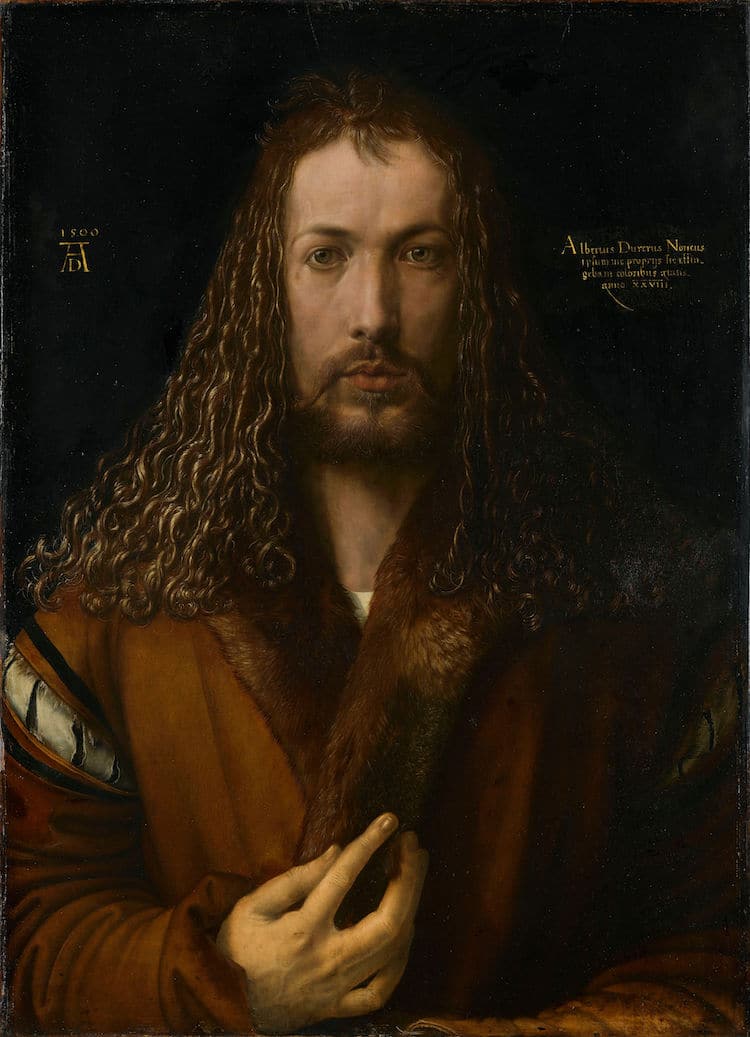
Self-portrait at 28, oil painting on lime, 1500 (Photo: Wikimedia Commons, CC0 1.0 Public Domain Dedication)
|
Full Name
|
Albrecht Dürer
|
|
Born
|
May 21, 1471 (Nuremberg, Germany)
|
|
Died
|
April 6, 1528 (Nuremberg, Germany)
|
|
Notable Artwork
|
Melancolia I
|
|
Movement
|
Northern Renaissance
|
Northern Renaissance artist Albrecht Durer was the first artist to elevate printmaking to a form of fine art. He produced engravings, woodcuts, and etchings based on his meticulously detailed drawings. It was the first time someone attempted to duplicate such realistic illustrations, and its overwhelming success subsequently inspired other artists to make and distribute prints.
Famous works of art: Melancolia I (1514)
Michelangelo (1475–1564)
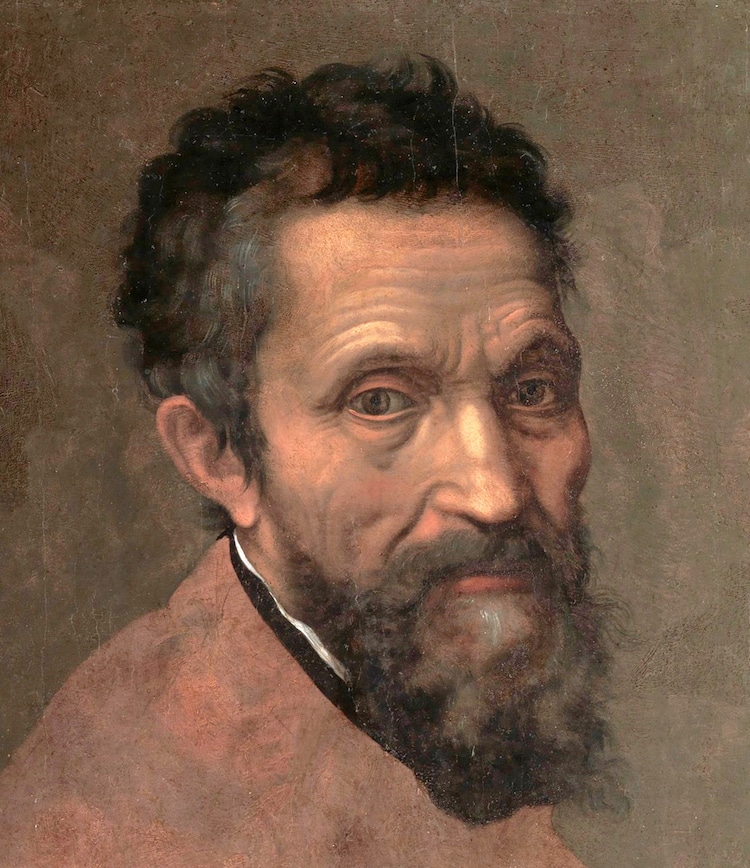
Portrait of Michelangelo, attributed to Daniele da Volterra, c. 1545 (Photo: Metropolitan Museum of Art via Wikimedia Commons, Public domain)
|
Full Name
|
Michelangelo di Lodovico Buonarroti Simoni
|
|
Born
|
March 6, 1475 (Caprese, Italy)
|
|
Died
|
February 18, 1564 (Rome, Italy)
|
|
Notable Artwork
|
Sistine Chapel ceiling, David
|
|
Movement
|
Italian Renaissance
|
A master of painting, sculpture, and architecture, Michelangelo Buonarroti is one of the most exemplary figures of the Italian Renaissance. His nickname Il Divino (‘The Divine One”) is evidence of how beloved he was. Additionally, his incredible success is significant in a time when most artists did not enjoy wealth or fame while they were alive. In fact, Michelangelo is the first Western artist to have a biography published during his lifetime.
Famous works of art: Pietà (1498–99) David ( 1501–4), Sistine Chapel ceiling (1508–12), The Last Judgment (1536–1541)
Raphael (1482–1520)
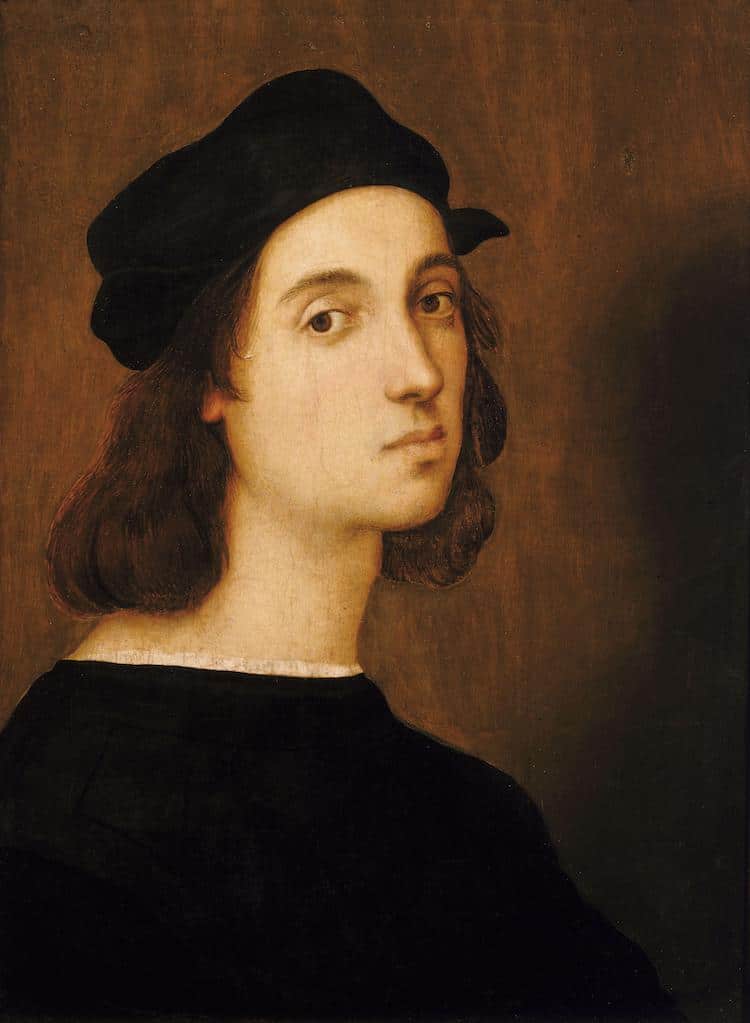
Raphael, “Self Portrait,” 1504–1506 (Photo: Wikimedia Commons, Public domain)
|
Full Name
|
Raffaello Sanzio da Urbino
|
|
Born
|
March 28 or April 6, 1483 (Urbino, Italy)
|
|
Died
|
April 6, 1520 (Rome, Italy)
|
|
Notable Artwork
|
The School of Athens
|
|
Movement
|
Italian Renaissance
|
Raffaello Sanzio da Urbino, best known simply as Raphael (1482–1520), is held today as a master of form and composition. Although he died at just 37 years old, the Italian architect and painter left behind a vast body of work. He is primarily known for his Madonna paintings, including his vivid Madonna in the Grass, as well as his large-scale mural, The School of Athens, which celebrates philosophy.
Famous works of art: Wedding of the Virgin (1504), School of Athens (1511), The Transfiguration (1520)
Baroque Period
Caravaggio (1571–1610)
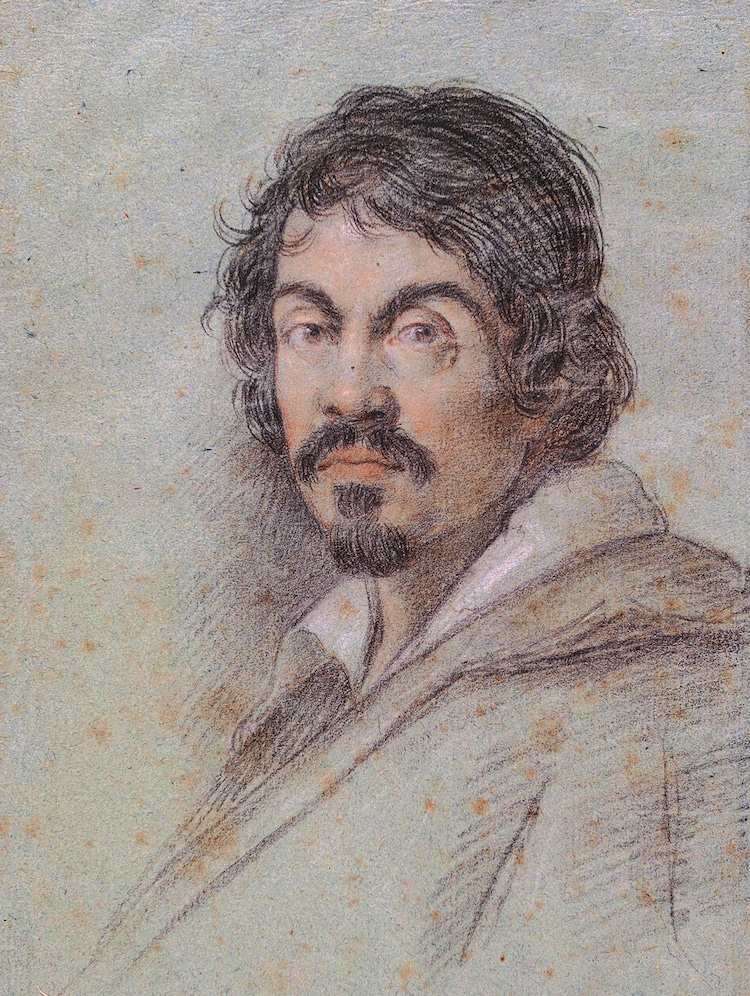
Portrait of Carvaggio by Ottavio Leoni, c. 1621 (Photo: Biblioteca Marucelliana via Wikimedia Commons)
|
Full Name
|
Michelangelo Merisi da Caravaggio
|
|
Born
|
September 29, 1571 (Milan, Italy)
|
|
Died
|
July 18, 1610 (Porto Ercole, Italy)
|
|
Notable Artwork
|
David with the Head of Goliath, The Calling of St. Matthew
|
|
Movement
|
Baroque
|
Baroque painter Michelangelo Merisi—better known as Caravaggio—led a passionate and turbulent life. His artistic legacy is just as evocative in style and technique. Never before had an artist used “normal” people as the models for paintings of biblical characters. Furthermore, his masterful use of extreme light and dark, or tenebrism, added an unparalleled psychological drama to his paintings.
Famous works of art: The Calling of Saint Matthew (1599–1600), David with the Head of Goliath (1610)
Peter Paul Rubens (1577–1640)
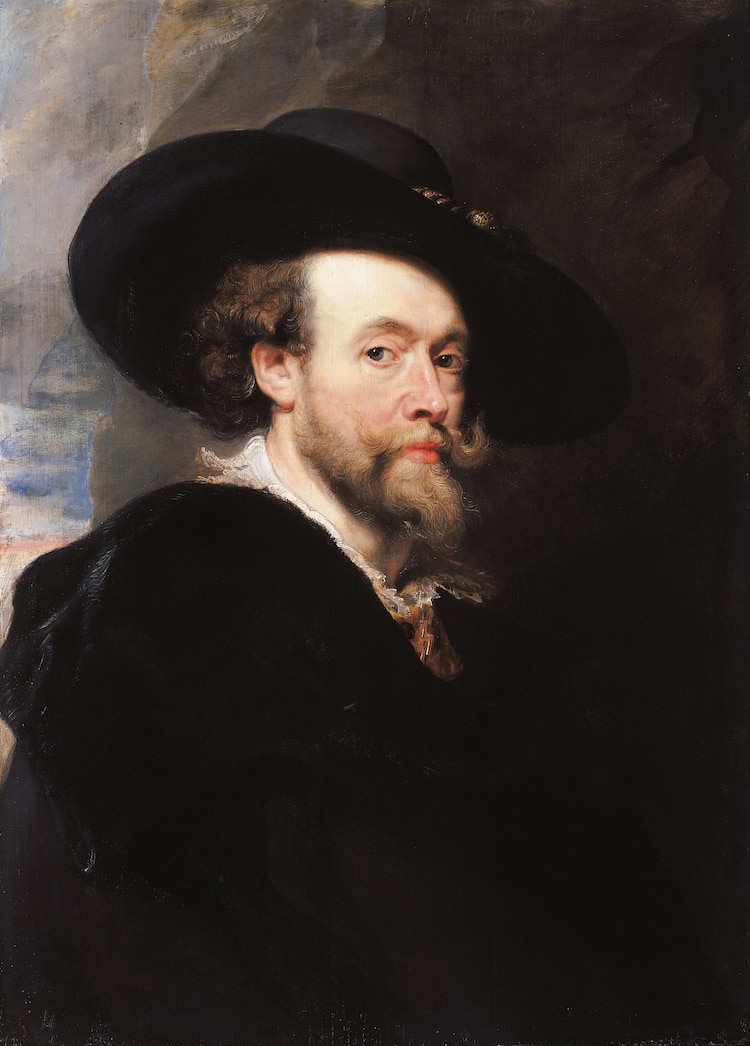
Peter Paul Rubens, “Portrait of the Artist,” 1623 (Photo: Wikimedia Commons, Public Domain)
|
Full Name
|
Sir Peter Paul Rubens
|
|
Born
|
June 28, 1577 (Siegen, Germany)
|
|
Died
|
May 30, 1640 (Antwerp, Belgium)
|
|
Notable Artwork
|
Rape of the Daughters of Leucippus
|
|
Movement
|
Baroque
|
Sir Peter Paul Rubens was a prominent Flemish Baroque painter who lived during the Dutch Golden Age. His distinct style emphasized color, movement, and drama—all key characteristics of the Baroque period. Known for his voluptuous women, opulent colors, and dynamic compositions, Rubens established himself as a prominent court painter for the Spanish Hapsburgs, developing an international reputation as an artist and diplomat.
Famous works of art: Marie de’ Medici cycle (1620s)
Artemisia Gentileschi (1593–c. 1656)
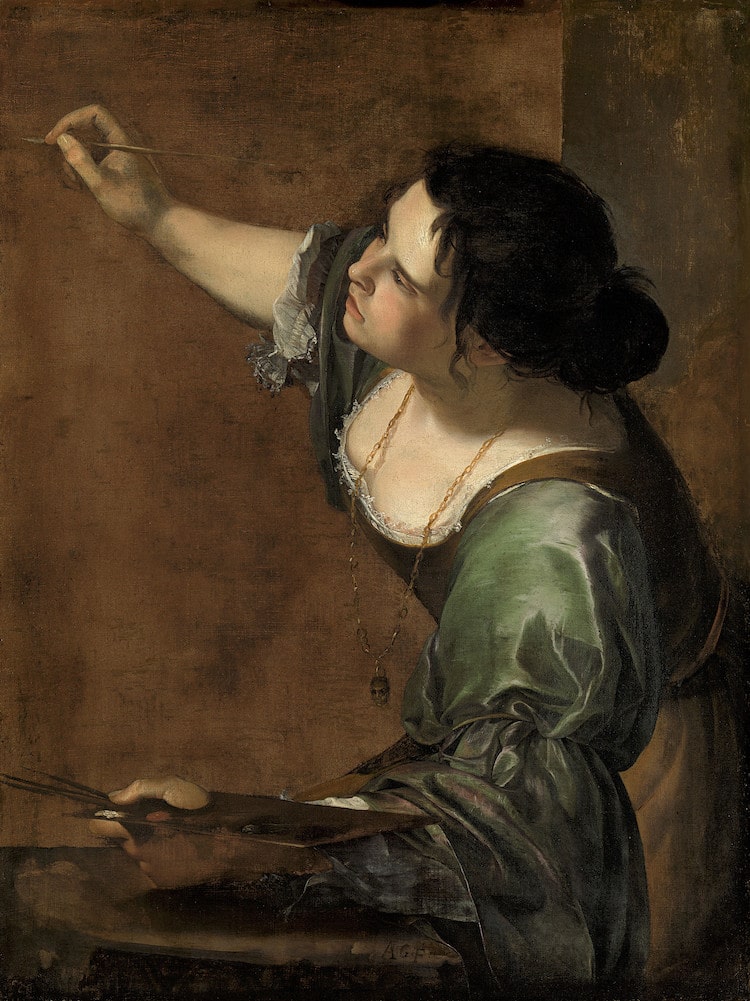
Artemisia Gentileschi, “Self-Portrait as the Allegory of Painting,” 1638–1639 (Photo: Wikimedia Commons, Public domain)
|
Full Name
|
Artemisia Gentileschi
|
|
Born
|
July 8, 1593 (Rome, Italy)
|
|
Died
|
c. 1656 (Naples, Italy)
|
|
Notable Artwork
|
Judith Slaying Holofernes
|
|
Movement
|
Baroque
|
As the daughter of an accomplished painter, Artemisia Gentileschi was afforded access to the art world at a young age. Early on she was in her father’s workshop mixing paints and he supported her career when he noted that she was exceptionally gifted. As a noted painter of the Italian Baroque period, Gentileschi did not let her gender hold her back from her subject matter. She painted large-scale Biblical and mythological paintings, just like her male counterparts, and was the first woman accepted to the prestigious Fine Art Academy in Florence.
Famous works of art: Judith Slaying Holofernes (1614–1620)
Gian Lorenzo Bernini (1598–1680)
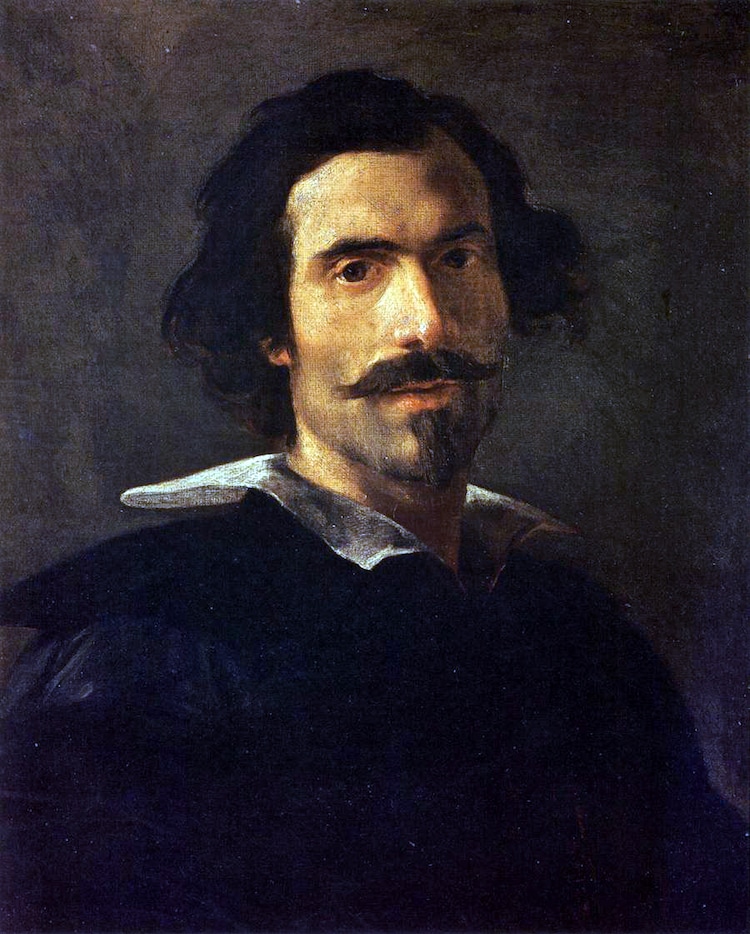
Gian Lorenzo Bernini, “Self Portrait,” c. 1635 (Photo: Uffizi via Wikimedia Commons, Public domain)
|
Full Name
|
Gian Lorenzo Bernini
|
|
Born
|
December 7, 1598 (Naples, Italy)
|
|
Died
|
November 28, 1680 (Rome, Italy)
|
|
Notable Artwork
|
David, Apollo and Daphne
|
|
Movement
|
Baroque
|
Perhaps no other artist defines the Baroque era more than Gian Lorenzo Bernini, whose impressive career spanned nearly 70 years. As a child prodigy, Bernini was creating large-scale marble sculptures as a teen. Later, he would become the architect of St. Peter’s Basilica—following in Michelangelo’s footsteps—where he created the Basilica’s iconic plaza and colonnade, as well as its central bronze canopy. A master of materials, Bernini is known for his astonishing ability to create movement and bring forth emotion with his work. In his hands, marble transforms into soft flesh that looks so real, that you’d want to reach out and squeeze it.
Famous works of art: The Rape of Proserpina (1621–1622), The Ecstasy of Saint Theresa (1647–1652)
Diego Velázquez (1599–1660)
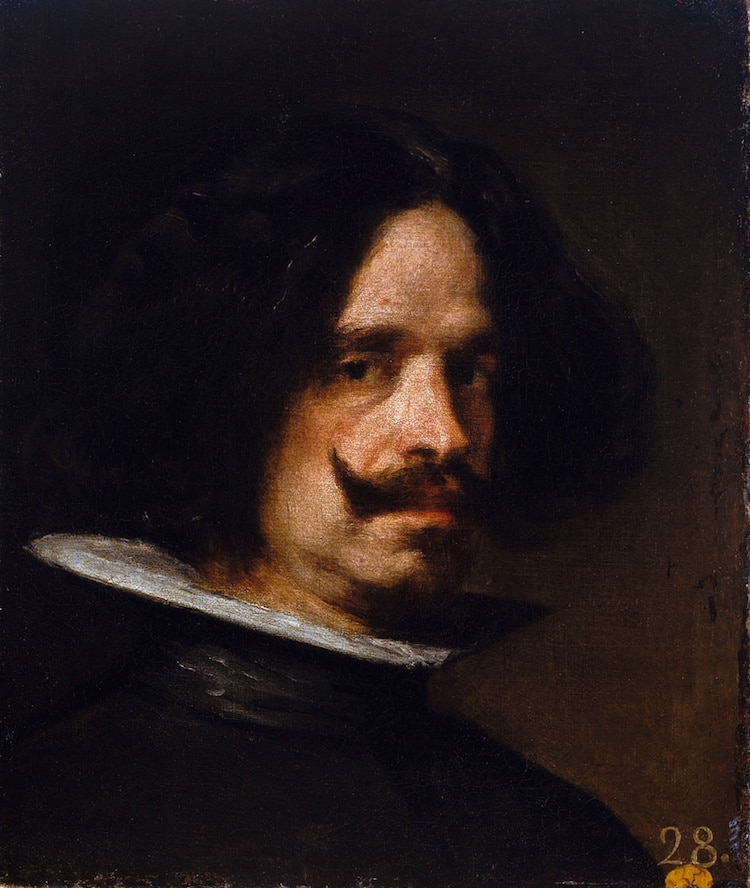
Diego Velázquez, “Self-Portrait,” c. 1640 (Photo: Wikimedia Commons, Public domain)
|
Full Name
|
Diego Rodríguez de Silva y Velázquez
|
|
Born
|
baptized June 6, 1599 (Seville, Spain)
|
|
Died
|
August 6, 1660 (Madrid, Spain)
|
|
Notable Artwork
|
Las Meninas
|
|
Movement
|
Baroque
|
Of the many influential artists that emerged during the Baroque period, one is best known for his honest and exquisite portraits of royalty: the Spanish painter Diego Velázquez. His position as a court painter granted the artist opportunities to travel Europe and see the art of the old masters, and capture some of the most prestigious people of the time. Velázquez’s portraits are considered to be among the finest ever made and had a lasting impact on future artists like Manet and Picasso.
Famous works of art: Portrait of Pope Innocent X (1650), Las Meninas (1656),
Rembrandt (1606–1669)
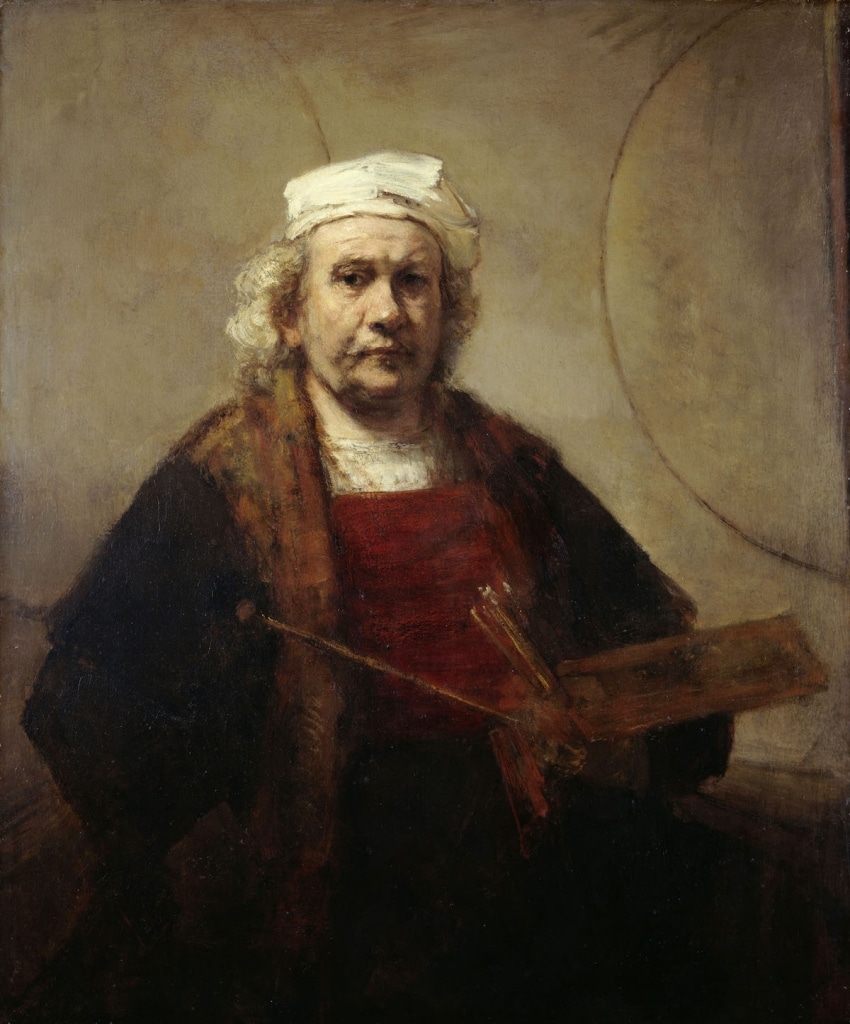
Self-Portrait with Two Circles, c. 1665 -1669 (Photo: Kenwood House via Wikimedia Commons, Public domain)
|
Full Name
|
Rembrandt Harmenszoon van Rijn
|
|
Born
|
July 15, 1606 (Leiden, Netherlands)
|
|
Died
|
October 4, 1669 (Amsterdam, Netherlands)
|
|
Notable Artwork
|
The Night Watch
|
|
Movement
|
Baroque
|
Dutch artist Rembrandt Harmenszoon van Rijn is regarded as one the most important and influential figures in the history of art. A master painter, printmaker, and draughtsman, his extensive body of work continues to fascinate art-lovers around the world. It is why he is also known as an “Old Master”—a label reserved for Europe’s most prolific pre-19th century painters.
Famous works of art: Anatomy Lesson of Dr. Tulp (1632), The Night Watch (1642)
Jan Vermeer (1632–1675)
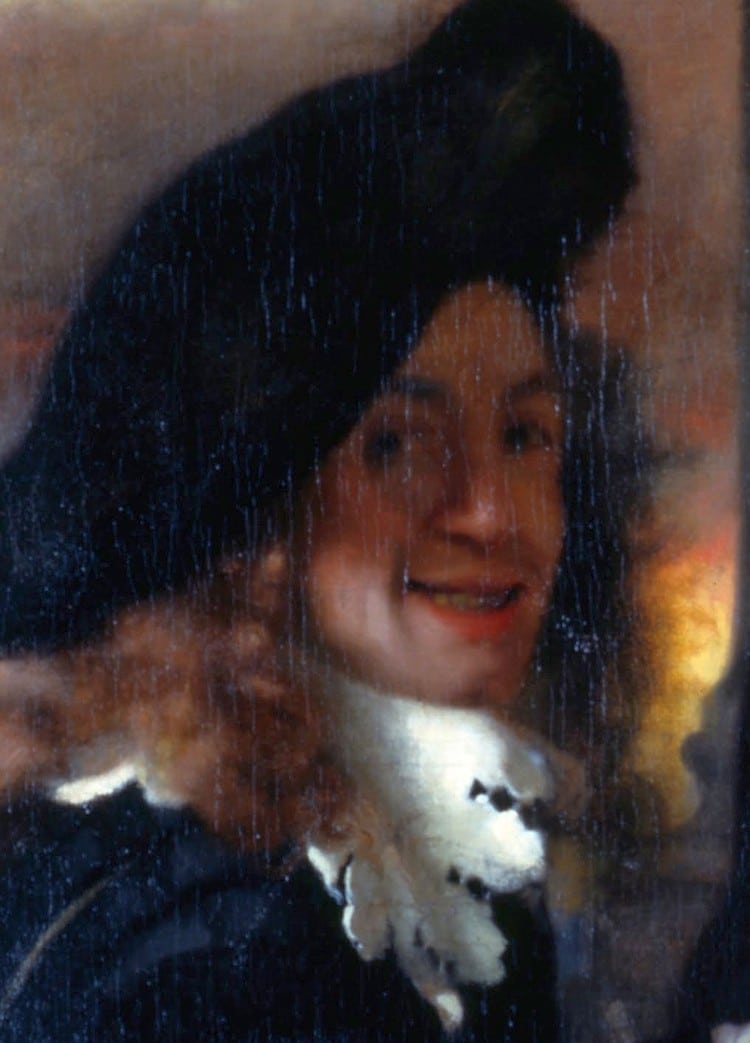
Assumed self-portrait of Jan Vermeer from his painting “The Procuress,” 1656. (Photo: Gemäldegalerie Alte Meister via Wikimedia Commons, Public domain)
|
Full Name
|
Johannes Vermeer
|
|
Born
|
baptised October 31, 1632 (Delft, The Netherlands)
|
|
Died
|
December 15, 1675 (Delft, The Netherlands)
|
|
Notable Artwork
|
Girl with a Pearl Earring
|
|
Movement
|
Baroque
|
Johannes Vermeer was devoted to exploring the everyday moments of the 17th-century Dutch Golden Age, often painting scenes of domestic life. He was dubbed the “Master of Light” due to the way he perfectly painted how natural light danced on the skin, fabrics, and other objects. Although he was a relatively successful painter during his lifetime, there are only 34 paintings attributed to him today. Still, this precious portfolio reveals the artist’s exceptional understanding of color, composition, and realism.
Famous works of art: Girl with a Pearl Earring (c. 1665)
Edo Period (Japan)
Katsushika Hokusai (c. 1760–1840)
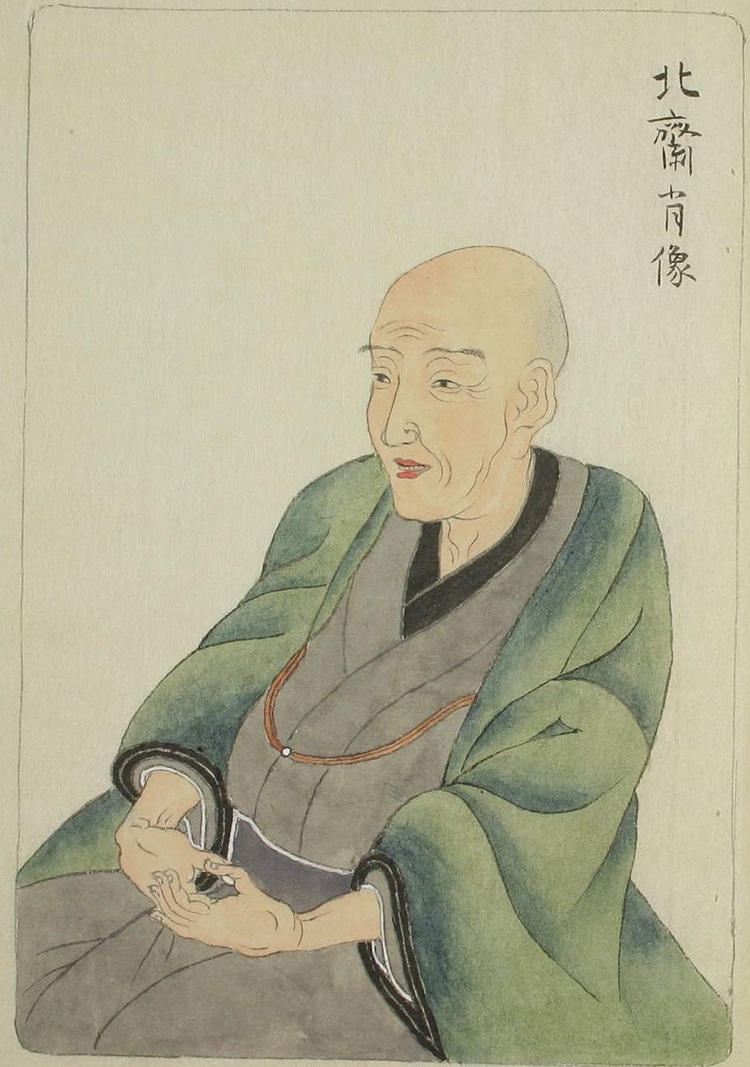
Keisai Eisen, “Portrait of Hokusai,” before 1848 (Photo: Wikimedia Commons, Public domain)
|
Full Name
|
Katsushika Hokusai
|
|
Born
|
October 31, 1760 (Edo, Japan)
|
|
Died
|
May 10, 1849 (Edo, Japan)
|
|
Notable Artwork
|
The Great Wave off Kanagawa
|
|
Movement
|
Ukiyo-e
|
Best known for his iconic print The Great Wave Off Kanagawa, Katsushika Hokusai was a pioneer of the Ukiyo-e movement or Japanese woodblock prints. He was incredibly prolific during his lifetime, creating over 20,000 paintings, sketches, and prints. His series Thirty-Six Views of Mount Fuji were a major part of the Japonisme influence that helped shape Impressionism, several decades later.
Famous works of art: The Great Wave Off Kanagawa (c. 1826–1833)
Utagawa Hiroshige (1797–1858)
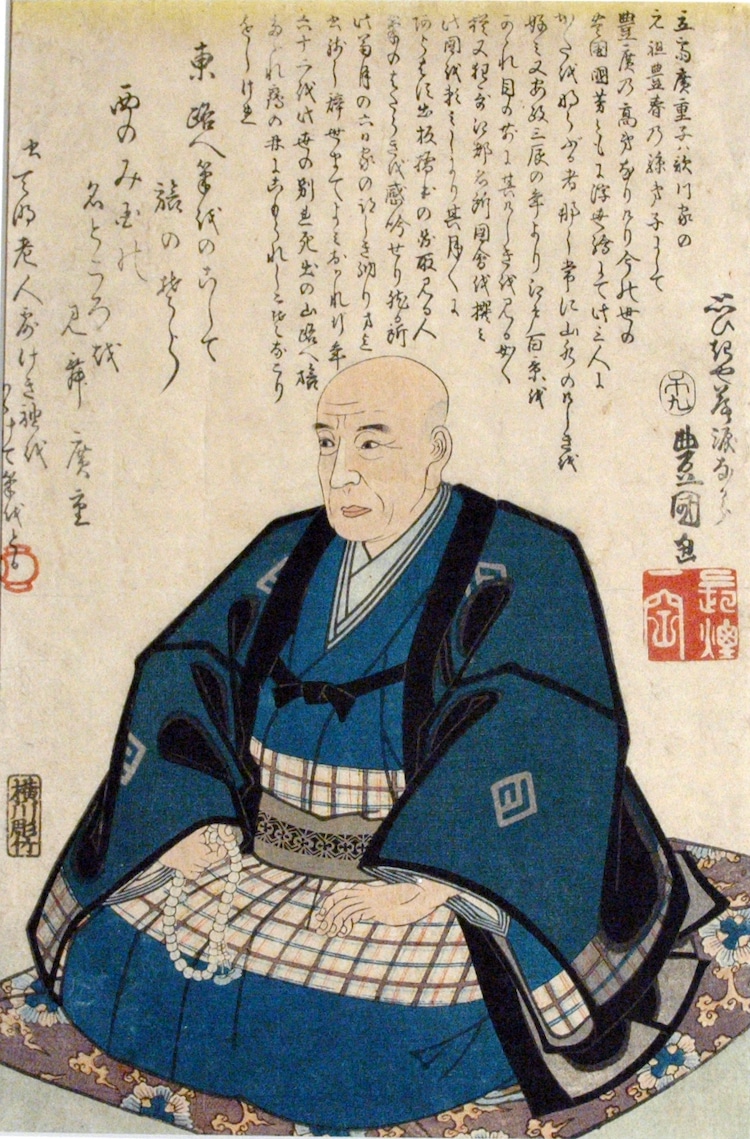
Utagawa Kunisada, Memorial Portrait of Utagawa Hiroshige, 1858 (Photo: Wikimedia Commons, Public domain)
|
Full Name
|
Utagawa Hiroshige
|
|
Born
|
1797 (Edo, Japan)
|
|
Died
|
October 12, 1858 (Edo, Japan)
|
|
Notable Artwork
|
One Hundred Famous Views of Edo
|
|
Movement
|
Utagawa school
|
Japanese artist Utagawa Hiroshige is often regarded as the last great artist of the Ukiyo-e movement. Ukiyo-e translates to “images of the floating world,” and artists of the movement made woodblock prints and paintings that depicted scenes of history, nature, and the famous faces of Edo. However, rather than create prints depicting typical Ukiyo-e motifs, Hiroshige developed his own style. Later, his works would influence prominent Impressionist and Post-Impressionist artists like Monet and Van Gogh.
Famous works of art: One Hundred Famous Views of Edo (1856–1859)
Romanticism
Eugène Delacroix (1798–1863)

Eugène Delacroix, “Self-Portrait,” 1837 (Photo: Louvre Museum
via Wikimedia Commons, Public domain)
|
Full Name
|
Ferdinand Victor Eugène Delacroix
|
|
Born
|
April 26, 1798 (Charenton-Saint-Maurice, France)
|
|
Died
|
August 13, 1863 (Paris, France)
|
|
Notable Artwork
|
Liberty Leading the People
|
|
Movement
|
Romanticism
|
A master of color, movement, and drama, Eugène Delacroix was a leader of the Romanticism art movement and an influential figure in the work of the Impressionists. Delacroix’s oeuvre spanned contemporary events, mythological scenes, Orientalism, and portraiture.
Famous works of art: The Death of Sardanapalus (1827), Liberty Leading the People (1830)
Realism—Impressionism
Édouard Manet (1832–1883)
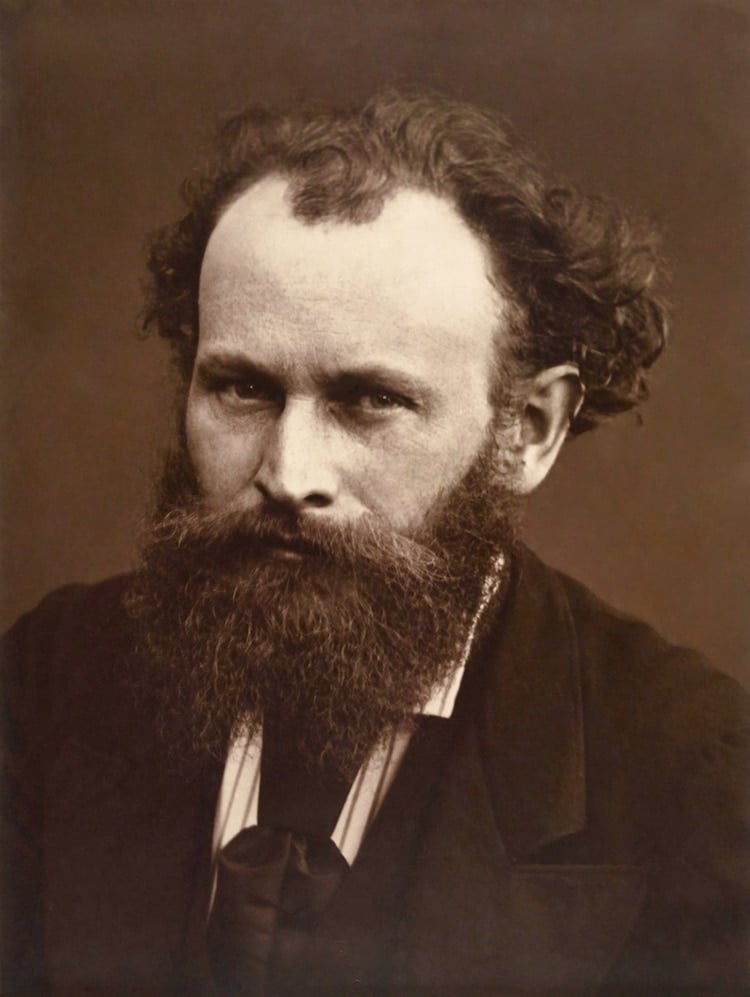
Photograph of artist Édouard Manet, enlargement by Paul Nadar of his father’s original, before 1870 (Photo: Wikimedia Commons, Public domain)
|
Full Name
|
Édouard Manet
|
|
Born
|
January 23, 1832 (Paris, France)
|
|
Died
|
April 30, 1883 (Paris, France)
|
|
Notable Artwork
|
The Luncheon on the Grass, A Bar at the Folies-Bergère
|
|
Movement
|
Realism, Impressionism
|
Édouard Manet (1832-1883) was one of the first 19th-century artists to paint modern life and a pioneering figure who led the transition from Realism to Impressionism. Controversial at the time, his paintings depicted nude women—one of which was the French female painter, Victorine Meurent— who posed for several of Manet’s most famous paintings, including Olympia.
Famous works of art: Olympia (1863), The Luncheon on the Grass (1863), A Bar at the Folies-Bergère (1882)
Impressionism
Edgar Degas (1834–1917)
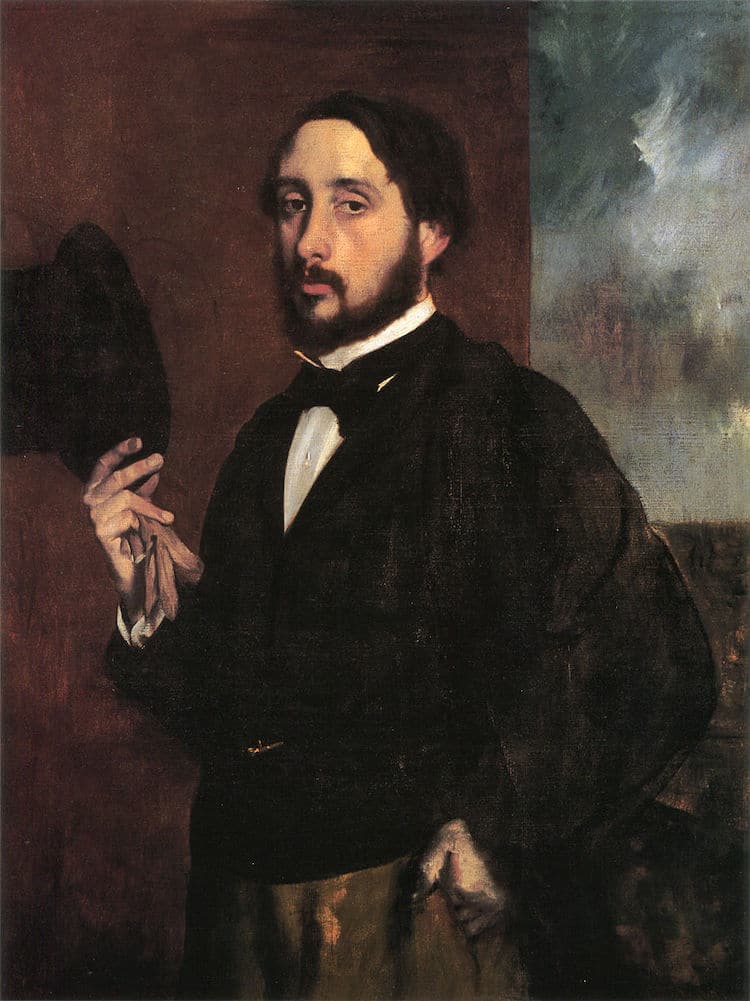
Edgar Degas, “Self-Portrait,” c. 1863 (Photo: Wikimedia Commons, Public domain)
|
Full Name
|
Hilaire-Germain-Edgar De Gas
|
|
Born
|
July 19, 1834 (Paris, France)
|
|
Died
|
September 27, 1917 (Paris, France)
|
|
Notable Artwork
|
The Dance Class
|
|
Movement
|
Impressionism
|
Unlike other Impressionists, Edgar Degas was not preoccupied with light and nature. Instead, he preferred to capture intimate indoor depictions (seen “as if you looked through a key-hole”). This interest is evident in his collection of ballet paintings—set both in studios and on stage—as well as his voyeuristic pastel series of women at la toilette. Though less prevalent than ballerinas and bathers, horseback riders often appear in Degas’ oeuvre.
Famous works of art: The Dance Class (1875), L’Absinthe (1875–1876)
Claude Monet (1840–1926)
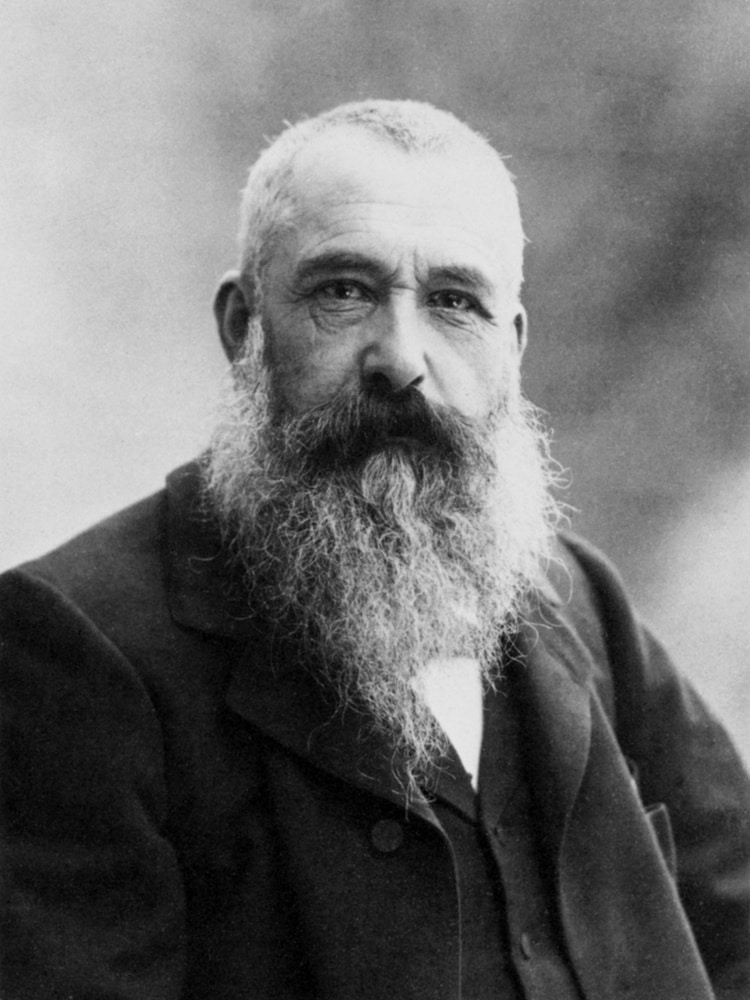
Portrait of Claude Monet by Nadar, 1899 (Photo: Wikimedia Commons, Public domain)
|
Full Name
|
Oscar-Claude Monet
|
|
Born
|
November 14, 1840 (Paris, France)
|
|
Died
|
December 5, 1926 (Giverny, France)
|
|
Notable Artwork
|
Water Lilies series
|
|
Movement
|
Impressionism
|
With a one-of-a-kind style and a pioneering approach to painting, Claude Monet is renowned as an influential Impressionist figure. Using distinctively dappled brushstrokes, a characteristically colorful range of tones, and a focus on light, the French artist created compositions that captured the essence of the movement.
Famous works of art: Impression, sunrise (1872), Water Lilies series (1883–1926)
Mary Cassatt (1844–1936)
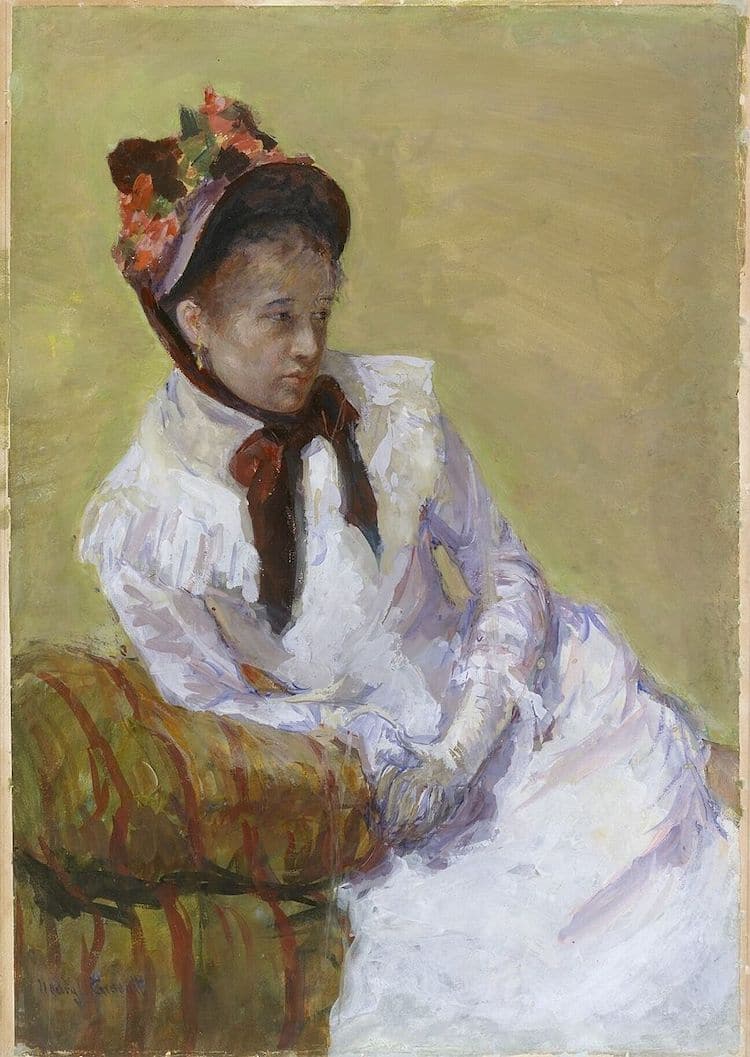
Mary Cassatt, “Self-Portrait,” c. 1878 (Photo: The Met via Wikimedia Commons, Public domain)
|
Full Name
|
Mary Stevenson Cassatt
|
|
Born
|
May 22, 1844 (Allegheny City, PA, USA)
|
|
Died
|
June 14, 1926 (Le Mesnil-Theribus, France
|
|
Notable Artwork
|
The Child’s Bath
|
|
Movement
|
Impressionism
|
Initially introduced to Paris’ premier artists by Edgar Degas, Mary Cassatt (1844–1936)—an American artist—would become a key figure in the French, male-dominated movement. Cassatt is known for her interest in representing women and girls in her art, which mostly manifested as quiet, mother-daughter depictions. However, some of her pieces, like her celebrated Little Girl in a Blue Armchair, depict women and girls in a state of solitary reflection.
Famous works of art: Little Girl in Blue Armchair (1878), Child’s Bath (1893)
Post-Impressionism
Paul Cézanne (1839–1906)
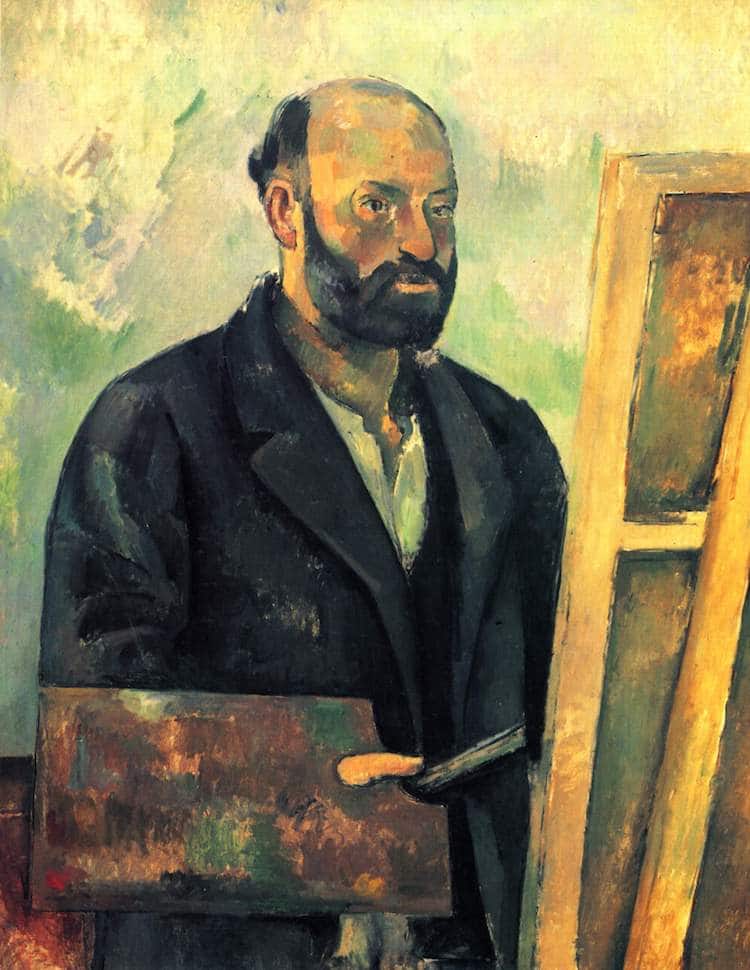
Paul Cézanne, “Self-Portrait with Palette,” c. 1890 (Photo: The Yorck Project via Wikimedia Commons, Public domain)
|
Full Name
|
Paul Cézanne
|
|
Born
|
January 19, 1839 (Aix-en-Provence, France)
|
|
Died
|
October 22, 1906 (Aix-en-Provence, France)
|
|
Notable Artwork
|
Mont Sainte-Victoire, The Card Players
|
|
Movement
|
Post-Impressionism
|
French artist Paul Cézanne was one of the pioneers of the Post-Impressionist art movement, whose work is characterized by painterly brushstrokes, an avant-garde approach to perspective, and a vivid color palette. Additionally, he is celebrated as the forefather of Fauvism and a precursor to Cubism. Given his prominence in these groundbreaking genres, Cézanne is regarded as one of the most influential figures in the history of modern art.
Famous works of art: The Card Players series (early 1890s), The Bathers series (1898–1905)
Paul Gauguin (1848–1903)
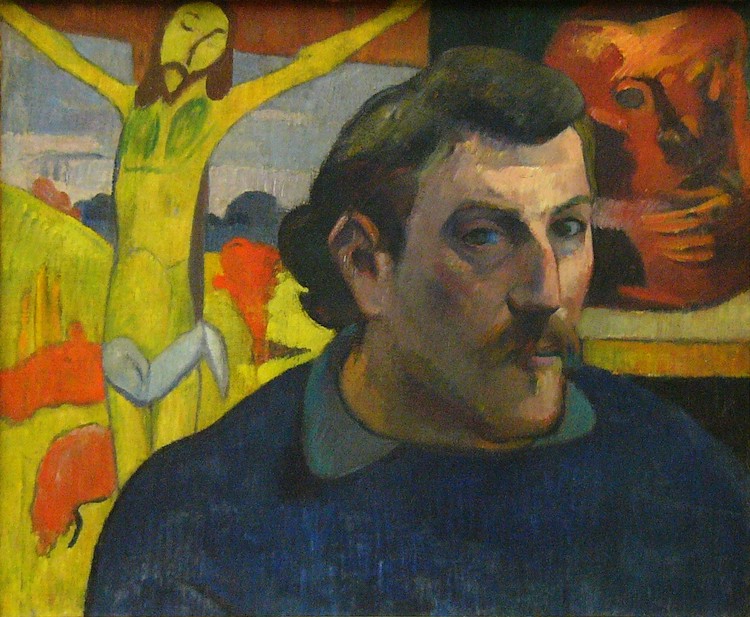
Paul Gauguin, “Self-Portrait with the Yellow Christ,” 1891 (Photo: Musée d’Orsay via Wikimedia Commons, Public domain)
|
Full Name
|
Eugène Henri Paul Gauguin
|
|
Born
|
June 7, 1848 (Paris, France)
|
|
Died
|
May 8, 1903 (Atuona, Marquesas Islands, French Polynesia)
|
|
Notable Artwork
|
Where Do We Come From? What Are We? Where Are We Going?
|
|
Movement
|
Post-Impressionism
|
As one of the most significant French painters of the Post-Impressionist movement, Paul Gauguin (1848–1903) experimented with new color theories and new stylistic approaches to painting. He famously worked alongside Vincent Van Gogh during a summer in the south of France, before abandoning his life in Western society altogether. In the early 1890s, he began traveling regularly to the south Pacific where he developed a new style that married his day-to-day observations with mythical symbolism. This style was strongly influenced by the so-called “primitive” arts of Africa, Asia, and French Polynesia.
Famous works of art: The Yellow Christ (1889), Where Do We Come From? What Are We? Where Are We Going? (1897)
Vincent van Gogh (1853–1890)
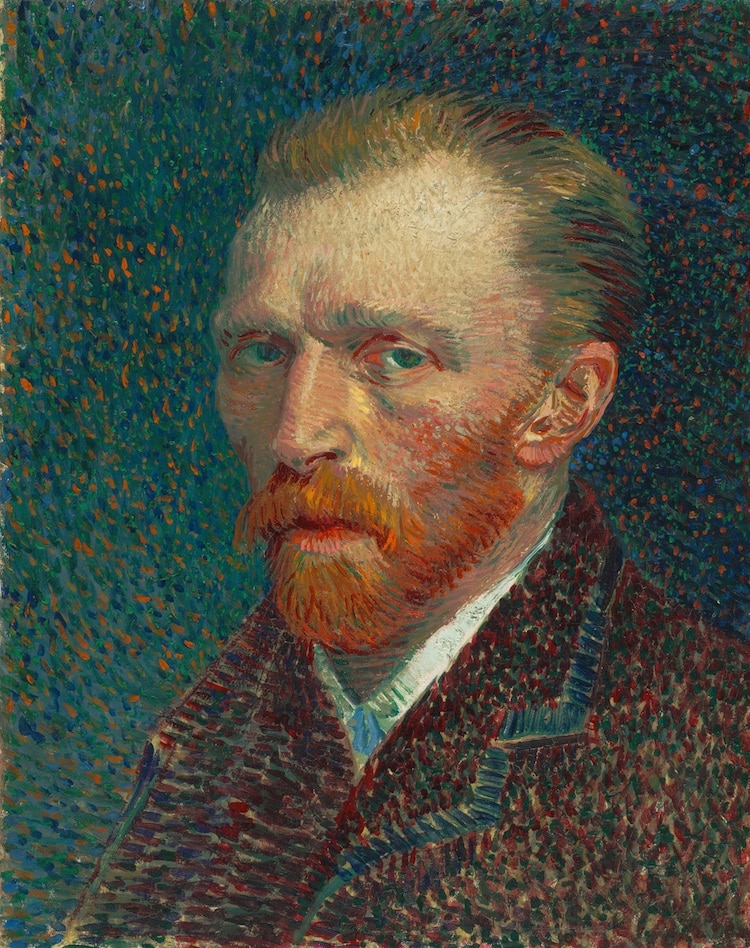
Vincent van Gogh, “Self-Portrait,” 1887 (Photo: Art Institute of Chicago via Wikimedia Commons, Public domain)
|
Full Name
|
Vincent Willem van Gogh
|
|
Born
|
March 30, 1853 (Zundert, The Netherlands)
|
|
Died
|
July 29, 1890 (Auvers-sur-Oise, France)
|
|
Notable Artwork
|
The Starry Night, Sunflowers
|
|
Movement
|
Post-Impressionism
|
While Vincent van Gogh has found a significant amount of fame posthumously, his life was not as untroubled as his characteristically colorful canvases would suggest. From financial struggles to his failing mental health, Van Gogh faced many personal challenges during his career. In spite of this, he left behind a dazzling body of work—including landscapes, portraiture, and urban scenes—in an iconic style that is uniquely his own.
Famous works of art: The Starry Night (1889), Sunflowers (1887)
Henri Matisse (1869–1954)
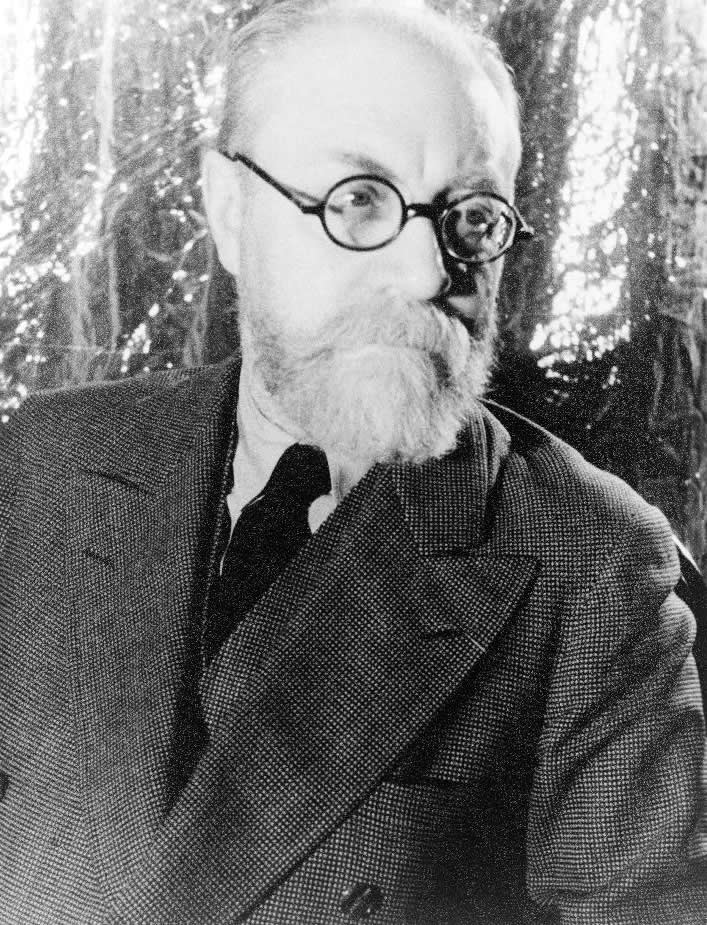
Photograph of Henri Matisse by Carl Van Vechten, 1933 (Photo: Van Vechten Collection
via Wikimedia Commons)
|
Full Name
|
Henri Émile Benoît Matisse
|
|
Born
|
December 31, 1869 (Le Cateau-Cambrésis, France)
|
|
Died
|
November 3, 1954 (Nice, France)
|
|
Notable Artwork
|
The Dance
|
|
Movement
|
Post-Impressionism, Fauvism
|
Considered the greatest colorist of the 20th century and a revolutionary artist who helped define modern art, French artist Henri Matisse first emerged as a Post-Impressionist. Then, in 1904, he led the Fauvism movement, which is French for “wild beasts.” The Les Fauves were a group of modern artists who favored pure, bright colors and expressive brushstrokes over realism.
Famous works of art: Woman with a Hat (1905), The Dance (1909–10)
Vienna Secessionism & Art Nouveau
Gustav Klimt (1862–1918)

Photograph of Gustav Klimt by Josef Anton Trčka, 1914 (Photo: Public domain via Wikimedia Commons)
|
Full Name
|
Gustav Klimt
|
|
Born
|
July 14, 1862 (Baumgarten, Austria)
|
|
Died
|
February 6, 1918 (Vienna, Austria)
|
|
Notable Artwork
|
The Kiss
|
|
Movement
|
Vienna Secession, Art Nouveau
|
A leader of the Vienna Secessionist artistic movement (which was associated with Art Nouveau), Austrian artist Gustav Klimt left behind thousands of drawings and a vast portfolio of painted works. He is most well-known for the collection of glistening, gilded works he produced during his Golden Phase.
Famous works of art: The Kiss (1907–8)
Modern Art
Pablo Picasso (1881–1973)
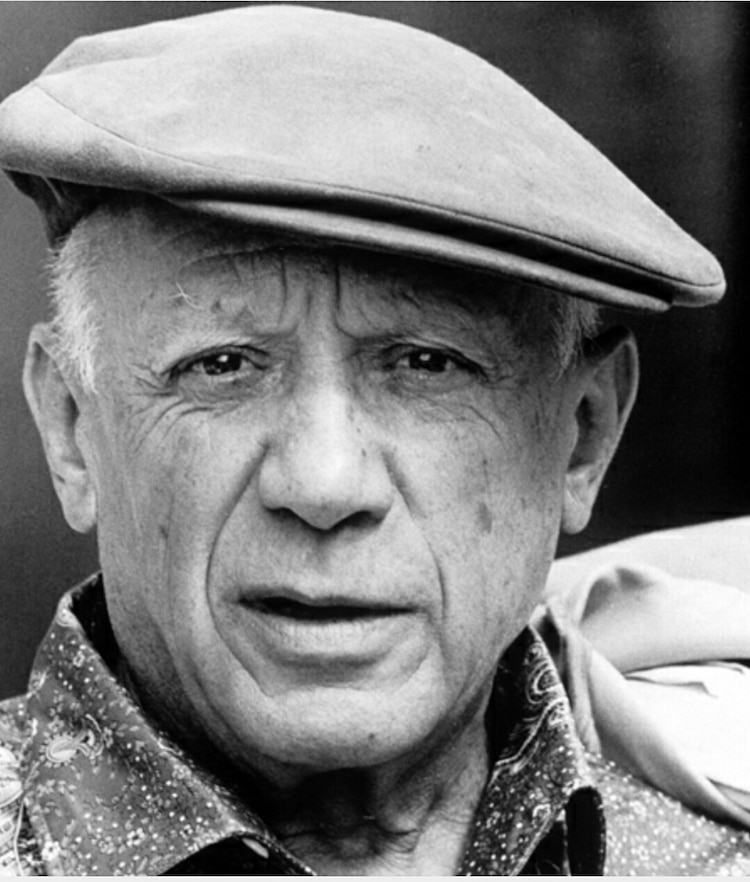
Photograph of Pablo Picasso, 1962 (Photo: Wikimedia Commons, Public domain)
|
Full Name
|
Pablo Diego José Francisco de Paula Juan Nepomuceno María de los Remedios Cipriano de la Santísima Trinidad Ruiz y Picasso
|
|
Born
|
October 25, 1881 (Málaga, Spain)
|
|
Died
|
April 8, 1973 (Mougins, France)
|
|
Notable Artwork
|
Les Demoiselles d’Avignon, Guernica
|
|
Movement
|
Cubism
|
With a career that spanned 79 years and included success in painting, sculpting, ceramics, poetry, stage design, and writing, Pablo Picasso is one of the most important artists of the 20th century. While most artists are known for one iconic style, Picasso’s changed several times during his lifetime. Some of his most distinct periods include the Blue Period, Cubism, and Surrealism.
Famous works of art: Les Demoiselles d’Avignon (1907), Guernica (1937)
Amadeo Modigliani (1884–1920)

Photo of Amadeo Modigliani, c. 1919 (Photo: Wikimedia Commons, Public domain)
|
Full Name
|
Amedeo Clemente Modigliani
|
|
Born
|
July 12, 1884 (Livorno, Italy)
|
|
Died
|
January 24, 1920 (Paris, France)
|
|
Notable Artwork
|
Portrait of the Artist’s Wife
|
Italian painter and sculptor Amedeo Modigliani was an integral member of the École de Paris (School of Paris). Not associated with any one particular art genre, Modigliani’s signature style merges European movements (such as Cubism) with non-Western art forms. He’s best known for his distinctive nudes and portraits that are characterized by elongated proportions and African mask-like faces. While his nudes scandalized audiences at the time, his melancholic portraits revealed his subjects’ personal inner lives.
Famous works of art: Portrait of the Artist’s Wife (1918)
Diego Rivera (1886–1957)
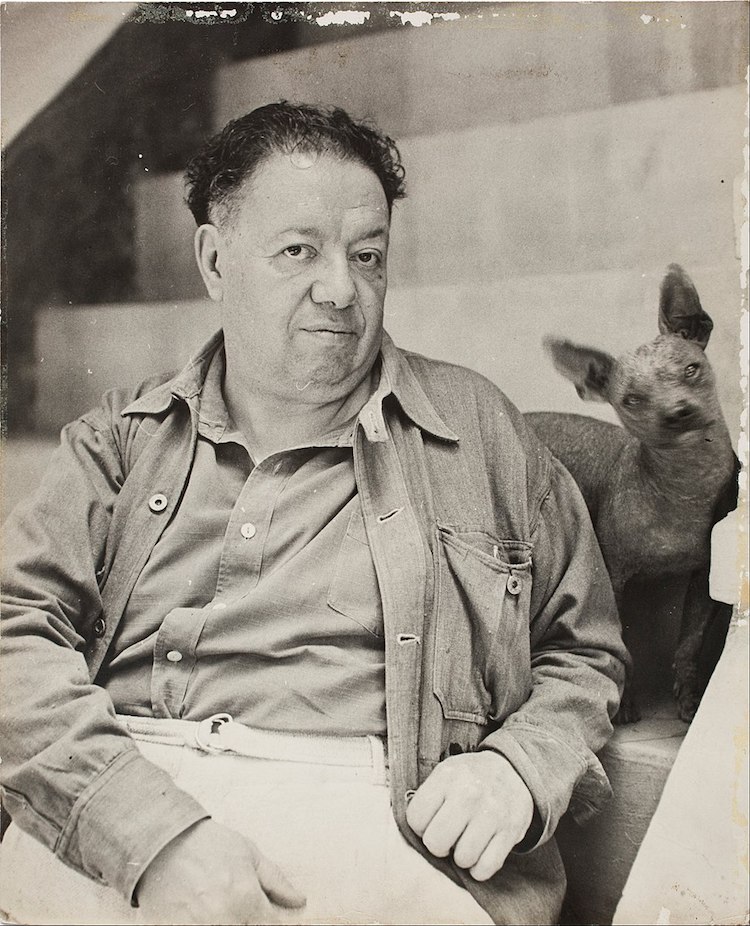
Photo of “Diego Rivera with a xoloitzcuintle dog in the Blue House, Coyoacan” (Photo: Wikimedia Commons, Public domain)
|
Full Name
|
Diego María de la Concepción Juan Nepomuceno Estanislao de la Rivera y Barrientos Acosta y Rodríguez
|
|
Born
|
December 8, 1886 (Guanajuato City, Mexico)
|
|
Died
|
November 24, 1957 (Mexico City, Mexico)
|
|
Notable Artwork
|
The History of Mexico, Man at the Crossroads
|
|
Movement
|
Mexican Mural Movement
|
Equally famous for his revolutionary paintings and tumultuous personal life, Diego Rivera remains one of modern art‘s most well-known figures. He was one of the leading figures of Mexican Muralism, creating distinct paintings characterized by a bold color palette and simplified forms inspired by both Mayan and Aztec art. With his large-scale public works, Rivera communicated important political messages that challenged, mobilized, and inspired the public.
Famous works of art: Man at the Crossroads (1934)
Georgia O’Keeffe (1887–1986)
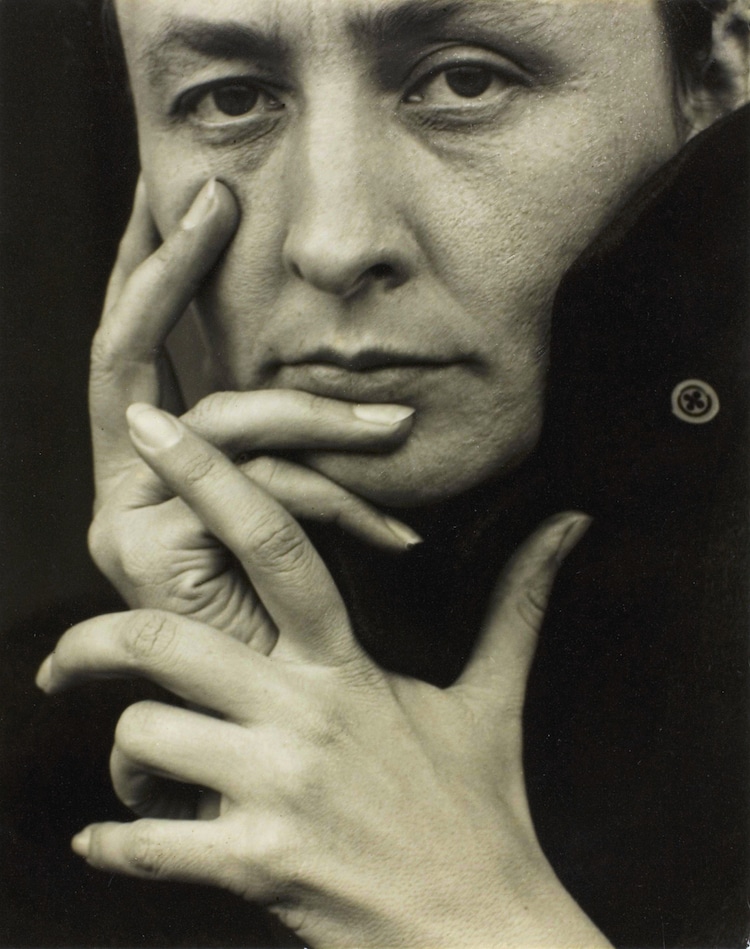
Photograph of Georgia O’Keeffe by Alfred Stieglitz, 1918 (Photo: Public domain via Wikimedia Commons)
|
Full Name
|
Georgia Totto O’Keeffe
|
|
Born
|
November 15, 1887 (Sun Prairie, WI, USA)
|
|
Died
|
March 6, 1986 (Santa Fe, NM, USA)
|
|
Notable Artwork
|
Cow’s Skull: Red, White, and Blue
|
|
Movement
|
American Modernism
|
American artist Georgia O’Keeffe helped to usher in the American Modernism movement with a style that favors the interpretation of subjects rather than representing them through strict realism. Likewise, she is best known for her abstract depictions of colorful blooms and landscapes of the Southwestern United States.
Famous works of art: Jimson Weed (1936), Sky Above Clouds IV (1965)
Surrealism
René Magritte (1898–1967)
|
Full Name
|
René François Ghislain Magritte
|
|
Born
|
November 21, 1898 (Lessines, Belgium)
|
|
Died
|
August 15, 1967 (Brussels, Belgium)
|
|
Notable Artwork
|
The Son of Man
|
|
Movement
|
Surrealism
|
As a pioneer of the Surrealist art movement, René Magritte created work that celebrated the subconscious mind and the world of dreams. Throughout his long career, he produced paintings that blurred the line between reality and fantasy and invited the viewer to question what they thought they knew.
Famous works of art: The Treachery of Images (1929), The Son of Man (1964)
Salvador Dalí (1904–1989)
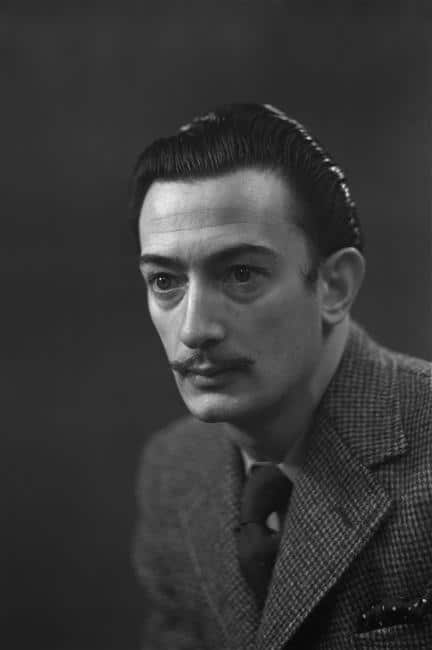
Salvador Dalí, photographed by Studio Harcourt, 1936 (Photo: RMN via Wikimedia Commons, Public domain)
|
Full Name
|
Salvador Domingo Felipe Jacinto Dalí i Domènech
|
|
Born
|
May 11, 1904 (Figueres, Spain)
|
|
Died
|
January 23, 1989 (Figueres, Spain)
|
|
Notable Artwork
|
The Persistence of Memory
|
|
Movement
|
Surrealism
|
Few artists are as visually iconic as Salvador Dalí. Although he explored a variety of mediums during his lifetime, including sculpture, printmaking, fashion, writing, and even filmmaking, Dalí’s paintings stand out as particularly epochal. In particular, the artist developed his own visual language for depicting his own inner world, dreams, and hallucinations.
Famous works of art: The Persistence of Memory (1931), The Temptation of Saint Anthony (1946)
Frida Kahlo (1907–1954)
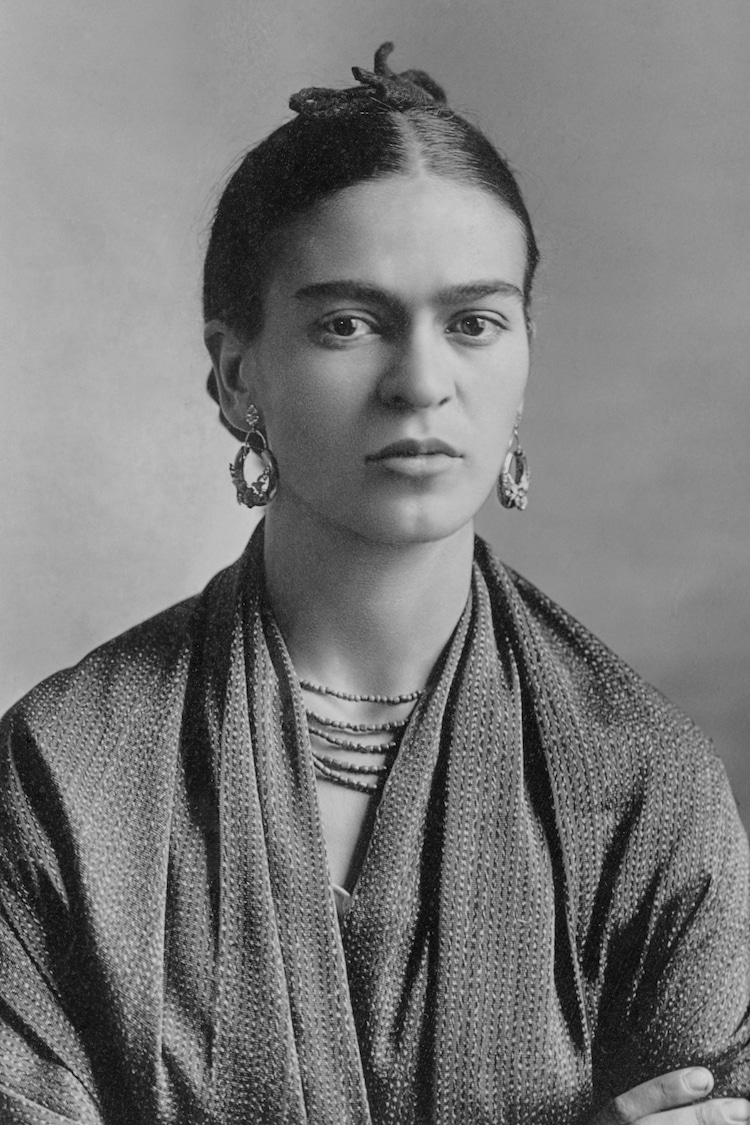
Photograph of Frida Kahlo by her father, Guillermo Kahlo, 1932 (Photo: Public domain via Wikimedia Commons)
|
Full Name
|
Magdalena Carmen Frida Kahlo y Calderón
|
|
Born
|
July 6, 1907 (Coyoacán, Mexico City, Mexico)
|
|
Died
|
July 13, 1954 (Coyoacán, Mexico City, Mexico)
|
|
Notable Artwork
|
The Two Fridas
|
|
Movement
|
Surrealism, Magic Realism
|
As one of the most famous female painters of all time, Mexican artist Frida Kahlo‘s legacy continues to make an impact today. Her passionate yet tumultuous life greatly impacted the subject matter of her paintings. She is particularly known for her compelling self-portraits, which deal with themes of identity, suffering, and the human body.
Famous works of art: The Two Fridas (1932), Self-Portrait with Thorn Necklace and Hummingbird (1940)
Abstract Expressionism
Mark Rothko (1903–1970)
View this post on Instagram
|
Full Name
|
Markus Yakovlevich Rothkowitz
|
|
Born
|
September 25, 1903 (Daugavpils, Russian Empire – now Latvia)
|
|
Died
|
February 25, 1970 (New York City, New York)
|
|
Notable Artwork
|
Untitled, Black on Gray
|
|
Movement
|
Abstract Expressionism, Color Field
|
American painter Mark Rothko revolutionized abstract art by becoming one of the pioneers of color field painting. He expressed profound emotion through his signature compositions of hazy, colored squares on large canvases that occupy a viewer’s entire field of vision, evoking what he referred to as “the sublime.”
Famous works of art: Untitled, Black on Gray (1969)
Jackson Pollock (1912–1956)
View this post on Instagram
|
Full Name
|
Paul Jackson Pollock
|
|
Born
|
January 28, 1912 (Cody, Wyoming)
|
|
Died
|
August 11, 1956 (Saratoga Springs, New York)
|
|
Notable Artwork
|
Autumn Rhythm
|
|
Movement
|
Abstract Expressionism
|
American artist Jackson Pollock is considered one of the greatest painters of the Abstract Expressionist movement. His signature drip paintings—which he began producing in the late 1940s—captivated the art world. Pollock redefined line, color, and pictorial space by finding an entirely new way to fill a canvas.
Famous works of art: No. 5 (1948), Autumn Rhythm: Number 30 (1950)
Pop Art
Andy Warhol (1928–1987)
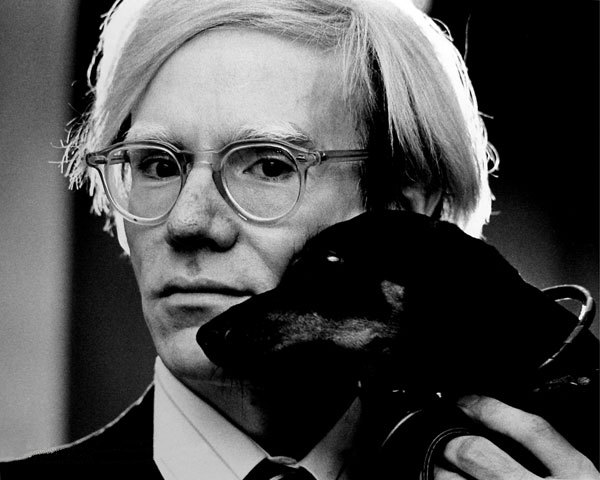
Photograph of Andy Warhol with Archie, his pet Daschund by Jack Mitchell, 1973 (Photo: Wikimedia Commons, CC BY 4.0)
|
Full Name
|
Andrew Warhola Jr.
|
|
Born
|
August 6, 1928 (Pittsburgh, Pennsylvania)
|
|
Died
|
February 22, 1987 (New York City, New York)
|
|
Notable Artwork
|
Campbell’s Soup Cans
|
|
Movement
|
Pop Art
|
American artist Andy Warhol was a pivotal figure in the 1950s Pop Art movement. While Warhol worked in a myriad of mediums, he is most famous for his polychromatic silkscreen prints and paintings. His works defined many of the movement’s most distinctive characteristics: bold, contemporary imagery; a bright color palette; and a repetitive aesthetic inspired by mass production.
Famous works of art: Campbell’s Soup Cans (1962), Marilyn Diptych (1962)
Contemporary Art
Jean-Michel Basquiat (1960–1988)
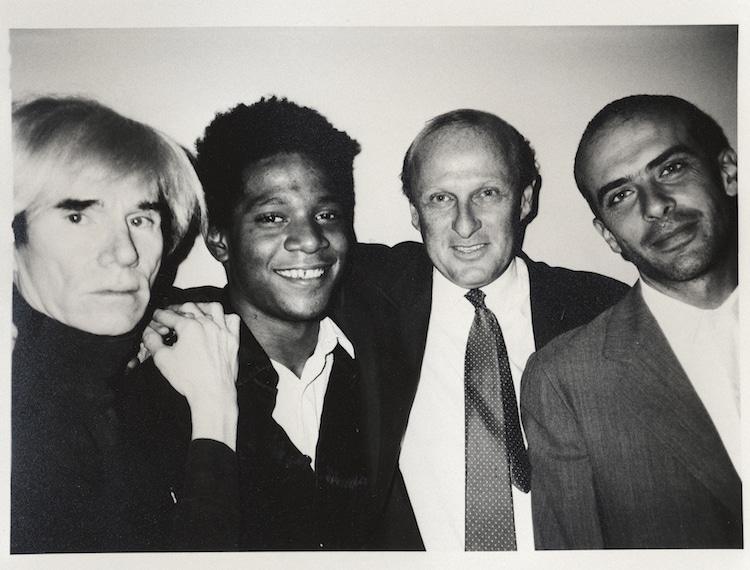
From left to right: Andy Warhol, Jean-Michel Basquiat, Bruno Bischofberger, and Fransesco Clemente, 1984 (Photo: Wikimedia Commons, CC BY-SA 4.0)
|
Full Name
|
Jean-Michel Basquiat
|
|
Born
|
December 22, 1960 (New York City, New York)
|
|
Died
|
August 12, 1988 (New York City, New York)
|
|
Notable Artwork
|
Untitled, Boy and Dog in a Johnnypump
|
|
Movement
|
Neo-expressionism
|
In the late 20th century, Jean-Michel Basquiat turned the contemporary art world on its head. Living and working in New York City in the 1970s and 80s, the young artist helped pioneer and popularize street art by bringing graffiti into the gallery—a monumental move that made the glitz and glamor of the art world accessible to people from all walks of life.
Famous works of art: Untitled (1982), Boy and Dog in a Johnnypump (1982)
Yayoi Kusama (1929–present)
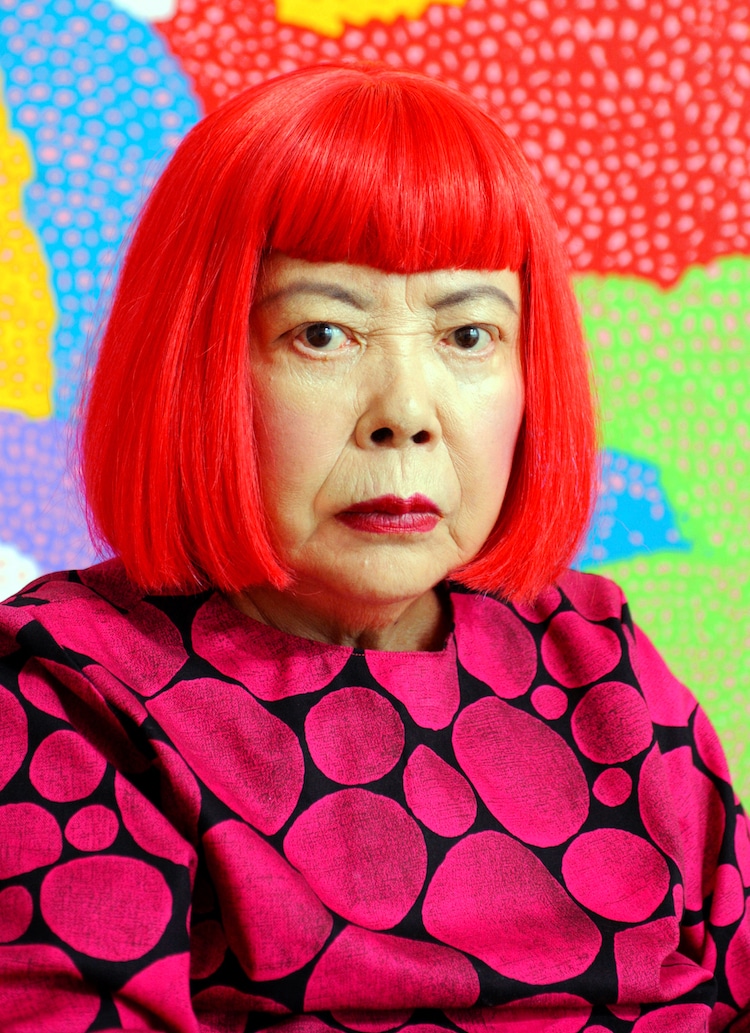
Photograph of Yayoi Kusama, 2016 (Photo: Wikimedia Commons, CC BY 4.0)
|
Full Name
|
Yayoi Kusama
|
|
Born
|
March 22, 1929 (Matsumoto, Japan)
|
|
Notable Artwork
|
Infinity Mirror Room
|
|
Movement
|
Conceptual Art
|
Japanese artist Yayoi Kusama is considered to be the most famous living female artist. Throughout her illustrious career, she has developed a signature approach to her craft. Characterized by polka dots, bold color palettes, and organic forms, her aesthetic is perhaps best typified by her pumpkin art, a collection of works celebrating the subject’s “generous unpretentiousness.”
Famous works of art: Infinity Mirror Room—Phalli’s Field (1965), Narcissus Garden (1966), Pumpkin series
Ai Weiwei (1957–present)
View this post on Instagram
|
Full Name
|
Ai Weiwei
|
|
Born
|
August 28, 1957 (Beijing, China)
|
|
Notable Artwork
|
Sunflower Seeds
|
|
Movement
|
Excessivism
|
Artist Ai Weiwei is undoubtedly the most well-known living Chinese creative today, but his country’s government doesn’t exactly give him the recognition he deserves. In communist China—where freedom of speech is tightly regulated—Ai’s varied portfolio of work doesn’t fetch the highest prices at auctions, and critics don’t sing his praises. Instead, the activist is viewed as a threat to the “harmonious society.” Through sculpture, film, installation, photography, and architecture—and across an array of materials including ceramics, marble, paint, and tea—Ai explores Chinese identity in the modern world as well as the culture’s social history.
Famous works of art: Dropping a Han Dynasty Urn (1995), Sunflower Seeds (2011)
Keith Haring (1958–1990)
View this post on Instagram
|
Full Name
|
Keith Allen Haring
|
|
Born
|
May 4, 1958 (Reading, Pennsylvania)
|
|
Died
|
February 16, 1990 (New York City, New York)
|
|
Notable Artwork
|
Keith Haring Mural, Tuttomondo
|
|
Movement
|
Pop Art, Street Art
|
In the 1980s, Keith Haring shot to international fame. Using his trademark line drawings, Haring became instantly recognizable for his pop style art. This would catapult him from the underground art scene in New York City to a career that would see him mingling with the likes of Andy Warhol, Grace Jones, Yoko Ono, and Madonna.
Famous works of art: Keith Haring Mural (1984), Tuttomondo (1989)
Takashi Murakami (1962–present)
View this post on Instagram
|
Full Name
|
Takashi Murakami
|
|
Born
|
February 1, 1962 (Tokyo, Japan)
|
|
Notable Artwork
|
Mr. Dob series, Flowers
|
|
Movement
|
Superflat
|
Often referred to as “the Warhol of Japan,” Takashi Murakami is known for blurring the line between art and consumerism. His brightly colored, cheerful work draws inspiration from the Japanese subculture of otaku, a term used to describe people devoted to all things pop culture. Through his art, Murakami explores Japan’s contemporary culture as well as the West’s ever-growing influence on it.
Famous works of art: Mr. Dob series, The Lonesome Cowboy (1998), Flowers (2002)
Banksy (1974–present)
View this post on Instagram
|
Full Name
|
Unknown
|
|
Born
|
Unknown (Bristol, England)
|
|
Notable Artwork
|
Balloon Girl, Dismaland
|
|
Movement
|
Street Art
|
Known only by his pseudonym, Banksy is arguably the most famous street artist today. Since the 1990s, the elusive, England-based creative has been making politically and socially charged art, oftentimes with a sense of dark humor. While his face and true identity remain unknown, his portfolio of attention-grabbing art continues to shock and entice the world.
Famous works of art: Balloon Girl (2002), Love is in the Bin (2018)
This article has been edited and updated.
Related Articles:
20 Famous Paintings From Western Art History Any Art Lover Should Know
The Stories and Symbolism Behind 7 of Frida Kahlo’s Most Famous Paintings
5 of René Magritte’s Most Famous Paintings That Capture the Surrealist’s Fascinating Mind
8 Real-Life People Who Became the Stars of Art History’s Most Famous Paintings

